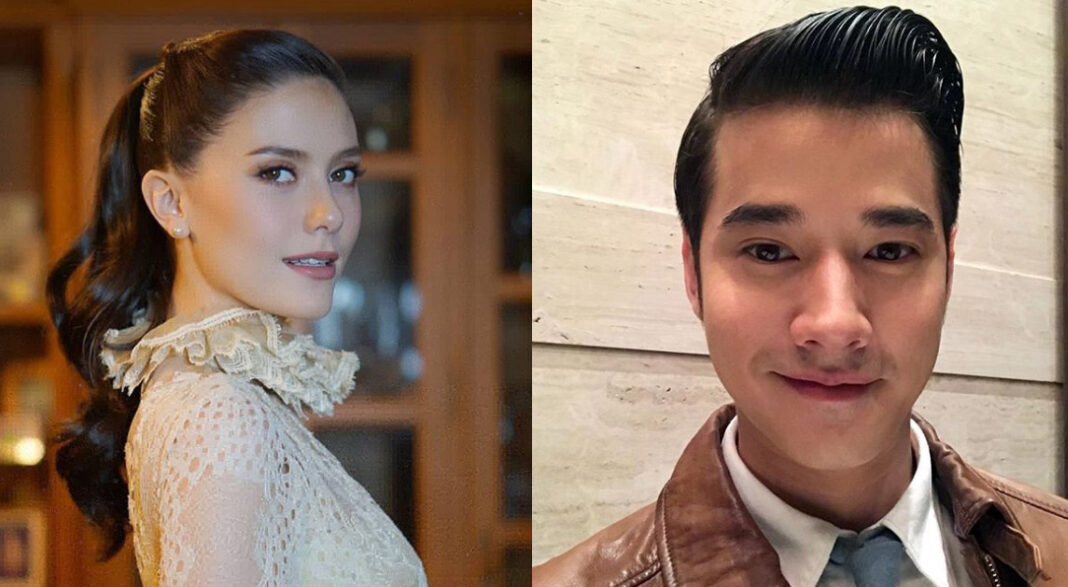By Sattrawut Bunruecha
BANGKOK — Maria Poonlertlarp Ehren may have fallen short last month on the Las Vegas stage but her reign is just beginning in Thailand.
Many hoped the Thai-Swedish beauty would become the third Thai contestant to win the Miss Universe crown, especially because her stunning beauty came with an impeccable grasp of English. Though she stalled out at fifth place in the pageant, she came home to an adoring nation and accepted a government offer Tuesday to be a living embodiment of “Thainess.”
Yet even before the pageant took place, Maria’s ethnicity and background had rekindled debate over what is and is not “Thai,” with detractors arguing she represents neither and supporters saying her mixed heritage gave her a huge advantage.
“Outwardly she may not look very Thai, but inwardly she is so Thai. She demonstrates Thai social etiquette, and that the whole world will know she is from Thailand,” read a comment on the Pantip.com webboard.
Rise of the ‘Half Blood’ Idols
In the broader domain of popular Thai culture, young mixed-race actors and models of Thai-Western unions, or leuk khrung (Thai-Western, or literally “half-blood”), appear in most contemporary Thai films and television dramas.
A number of stars and singers of Thai-Western intermarriage have quickly shot to superstardom during the past decade. Their faces beam from nearly every advertisement and program: Urassaya “Yaya” Sperbund, Nadech Kugimiya, Davika Hoorne, Kimberly Voltemas Tiamsiri and Mario Maurer. They’re are among the highest paid actors in Thailand. Most are under 25.
Mario; a 29 year old of Thai, German and Chinese descent; was hired last year by the tourism authority to be the face of Thailand.
Norwegian-Thai Urassaya ‘Yaya’ Sperbund / Instagram
Chutharat Rueangrak, 27, who avidly watches about 20 weekly hours of television dramas, is also a big fan of Nadech and Yaya. She said the popularity of Thai-Western celebs exploded again about a decade ago, “probably after ‘4 Huajai Haeng Koon Kao’ [‘4 Hearts of the Mountains’],” a 2010 soap opera that launched the careers of the two lead actors.
“Thai actors have to go through some plastic surgery to achieve the beauty standards such as double-fold eyelids, high noses, thin chins and V-shaped jawlines, while altering one’s body is not yet fully accepted in Thai society. Personally, I think those people do not look natural on screen,” she said.
In a market where skill in foreign languages is low and skin whitening a key marketing feature in skin products, it’s also about the corporate bottom line.
“Talents, especially the ability to speak English, plays an important role in success because it makes people look ‘expensive,’” Chutarat said.
“Expensive,” or paeng, is even a buzzword in image-oriented industries such as advertising and modeling to describe people and things that look stylish, elegant and glamorous.
In the advertising domain, Thai-Western actors, models, and singers have also become the dominant “face” of countless products. Talent agent Phijitra Phaesuwan said firms producing expensive products such as cosmetics, electronic gadgets and garments often choose Thai-Western actors and models because they look more paeng.
They may have more value for brands looking beyond Thailand’s borders.
“Usually the products pay more due mainly to the fact that the commercials appear in more countries, and sometimes throughout Asia,” Phijitra said.
As representations of leuk krung in the media have proliferated, so have notions of love across racial lines.
Read: Isaan Love Triangle: Thai Men Found Lacking by Farang-Loving Women
This is visible in films like “Plae Kao” (“The Scar”), a 2015 remake set amid a pastoral backdrop of buffalos and vast fields in what was a rural part of the capital. It featured Thai-Belgian Davika and Chaiyapol Julian Poupart.
For evidence that Western-Thai intermarriage, traditionally viewed as negative, has gained fuller acceptance one only has to go to social media, where #HandsomeFarangAreFathersOfMyChildren and #TellMeIfYouSeeHandsomeFarang are popular hashtags.
https://twitter.com/xIammorNing/status/939779121390874624
In dozens of posts daily, Thai netizens share photos of handsome foreign men and anecdotes of their virtues.
Chaturat, the avid soap fan, said the popularity of celebs of mixed heritage is rooted in insecurity.
“Thais often have mixed feelings of admiration and jealousy toward people who look superior in terms of social, financial and racial statuses and physicality,” she said. “The choices reflect Thai people’s deep-seated inferiority complex.”
Thus the dichotomy of a nation equally obsessed with both “Thainess” and the outside world.
Austrian-Thai Nadech Kugimiya is a ubiquitous face in marketing.
Despite the surge of ultra-nationalist sentiments aroused time and again, often for political purposes, Thais are not so inward when it comes to who they love in show business.
“In countries such as Japan, consumers still prefer actors who look local. Thailand is a nation where people look up to people who appear superior, the same way as people in less-developed neighboring countries idolize actors and singers from Thailand,” Phijitra said.
There lies the fundamental contradiction, according to Thammasat University lecturer Veluree Metaveevinij.
“The allure of something associated with the West is however ambiguous,” Veluree said. “Thai-Western actors play prominent roles in historical films and dramas, but at the same time the West is depicted as villains threatening the purity of Thai culture and Thainess in these same films and dramas.”
“The relationship between Thailand and the West is therefore a love-hate one,” the lecturer said. “We admire Thai-Western actors and singers, while reviling and blaming farangs as they represent capitalism and moral deprivation.”

















































